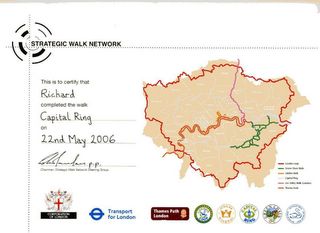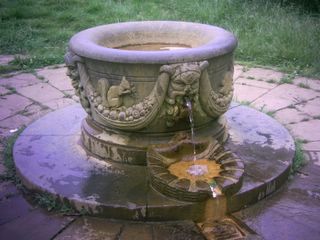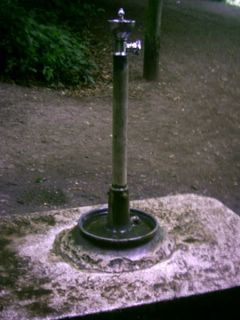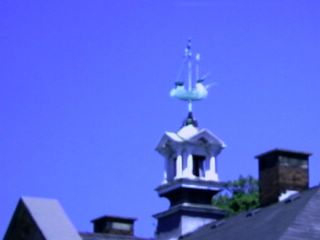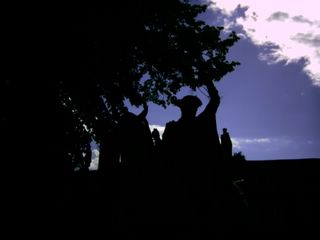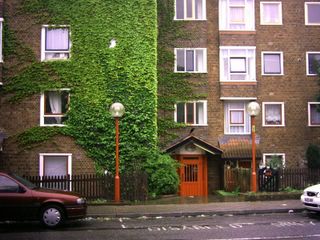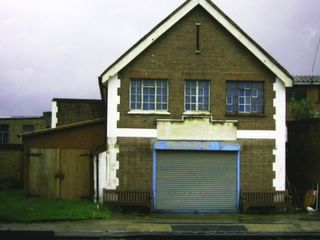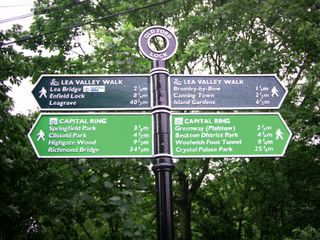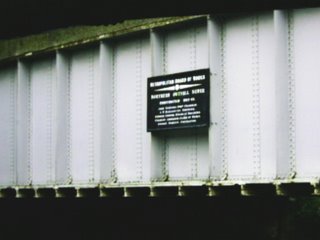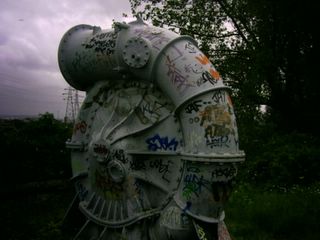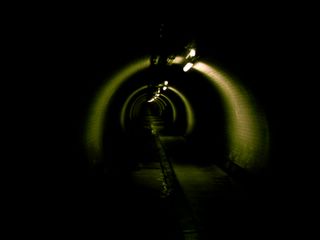
london loop sign
 Bexley – a borough of many surprises. Bromley – the London Borough
Bexley – a borough of many surprises. Bromley – the London BoroughWhat happened to Stage 1? I haven’t done it yet as the leaflets are not available. It was only a chance encounter in Bromley Library that got me the leaflets for stage 2 and 3.
Firstly, although the London Loop is a loop and not a circle (one cannot cross the Thames at Erith unless you have a rowing boat) the promoters insist this stands for London Outer Orbital Path. Not only is this tautologous (London is repeated) it is incorrect grammatically: it should be Outer London Orbital Path (OLOP), but I suspect the name was made to fit the acronym.
I also realised that this walk will be challenging, not just in terms of distance travelled and terrain but also getting to the beginning and end points. Many of the stations are not very accessible from Bermondsey and busses can be very slow. I need to get up very early! Also some of the signage is non existent.
Bexley is a pleasant village with almshouses and a charity antique shop! It still has the atmosphere of a village and a traditional camera shop, traditionally closed on Sunday. I soon left the village behind, joining the Cray Riverway which is the London Loop for this section. I passed a cricket field but the match was over for the day and the cricketers were going home. There was also a family with a well thumbed Loop guidebook, although I soon left them behind as I crossed the landfill site and walked down to the River Cray. ‘Here be Parakeets’ said the guide and sure enough I saw one, in its colourful plumage. There were also equally colourful dragonflies flying around. As it was a fairly warm day, although dull, lots of people were out on walking with their dogs, and it looked to be an amusing thing to do to have the dog race through the river, whether tempted or not by a tasty morsel of meat! I lost count of the number of dogs being exercised and cooled off this way. The first feature I photographed is the five arched bridge over the Cray with a weir.

five arch bridge Foot's Cray Meadow
 Foots Cray meadow is a pleasant spot for walking, picnicking and taking the air and is very well used for these purposes. The walk continues by the Cray until it reaches All Saints Church Foots Cray.
Foots Cray meadow is a pleasant spot for walking, picnicking and taking the air and is very well used for these purposes. The walk continues by the Cray until it reaches All Saints Church Foots Cray. 
All Saints Church
 This is an ancient church from 1330 although altered in the 19th Century reached from its Lych gate by an avenue of small yew trees. I was not able to see the interior but it has many historic artefacts.
This is an ancient church from 1330 although altered in the 19th Century reached from its Lych gate by an avenue of small yew trees. I was not able to see the interior but it has many historic artefacts.As this is the beginning of the Cray Riverway there is a commemorative post carved with bulrushes to mark the occasion.

Cray riverway starting post

Arthur Mee says that Foots Cray has thrown away its loveliness but I’m not sure how much it had. There is a private school there with the motto ‘While ye have light, believe in the light, that ye may be the children of light’ around its clock tower.
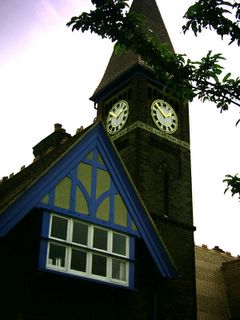
Believe in the light
 There is also an old black and white house in the high street
There is also an old black and white house in the high street 
Black and White House Foot's Cray
 and a view of the coca cola™ bottling plant that was famous for taking tap water and selling it as Dasani. I walked past the crumbling grandstand (well not very grand) of Cray Wanderers Football Club and some overgrown allotments to come out onto a hill with a pitch and putt course and three giant redwoods. In California (where these trees are native) one of the trees has a tunnel cut through it and one can drive a car through it. These trees could have a tunnel cut for a bicycle or mopèd. This is Sidcup Place and there is a mansion
and a view of the coca cola™ bottling plant that was famous for taking tap water and selling it as Dasani. I walked past the crumbling grandstand (well not very grand) of Cray Wanderers Football Club and some overgrown allotments to come out onto a hill with a pitch and putt course and three giant redwoods. In California (where these trees are native) one of the trees has a tunnel cut through it and one can drive a car through it. These trees could have a tunnel cut for a bicycle or mopèd. This is Sidcup Place and there is a mansion 
Sidcup place
 with a beautiful walled garden, full of lavender, roses and other flowering plants. I pressed on across the Sidcup Bypass via tunnels under the roundabout and entered Scadbury Park. This was where the signage almost stopped but I managed to get through the fields and woods towards the old moated manor house of Scadbury.
with a beautiful walled garden, full of lavender, roses and other flowering plants. I pressed on across the Sidcup Bypass via tunnels under the roundabout and entered Scadbury Park. This was where the signage almost stopped but I managed to get through the fields and woods towards the old moated manor house of Scadbury. 
Scadbury moated manor
 Very much a picturesque ruin it needs an artist to paint it. There were two wells, one on the other side of the moat so this must be the well of loneliness.
Very much a picturesque ruin it needs an artist to paint it. There were two wells, one on the other side of the moat so this must be the well of loneliness.
The well of lonliness? Scadbury
 After seeing this romantic spot I got rather lost in the Oak and Birch woods of Scadbury Park. Eventually I found Paul’s Cray Road and crossed into National Trust land at Pett’s Wood. I looked for and missed the William Willets sundial. Willets was a London builder and madman who wanted more work from his men (according to one story) or who wanted to play golf later in the evening (according to another). Instead of getting up earlier and doing all his work so he could go home early he had the hair brained notion of setting the clocks forward by 80 minutes in summer and back by 80 minutes in autumn. This scheme was later modified and adopted by Lloyd George during the first world war and has continued ever since.
After seeing this romantic spot I got rather lost in the Oak and Birch woods of Scadbury Park. Eventually I found Paul’s Cray Road and crossed into National Trust land at Pett’s Wood. I looked for and missed the William Willets sundial. Willets was a London builder and madman who wanted more work from his men (according to one story) or who wanted to play golf later in the evening (according to another). Instead of getting up earlier and doing all his work so he could go home early he had the hair brained notion of setting the clocks forward by 80 minutes in summer and back by 80 minutes in autumn. This scheme was later modified and adopted by Lloyd George during the first world war and has continued ever since. Daylight Saving Time does not save one second of daylight!
The sundial is marked only in Daylight Saving Time.
I did see a commemorative stone in Pett’s Wood to the person who prevented development of the wood.

Pett's wood memorial stone
 Pett’s wood has substantial suburban houses as per the picture,
Pett’s wood has substantial suburban houses as per the picture, 
Suburbia - Pett's Wood
 and no doubt substantial suburban residents. The public houses were filled to bursting with football fans so I had a take away from a kebab shop where I got a moderately good kebab.
and no doubt substantial suburban residents. The public houses were filled to bursting with football fans so I had a take away from a kebab shop where I got a moderately good kebab.

